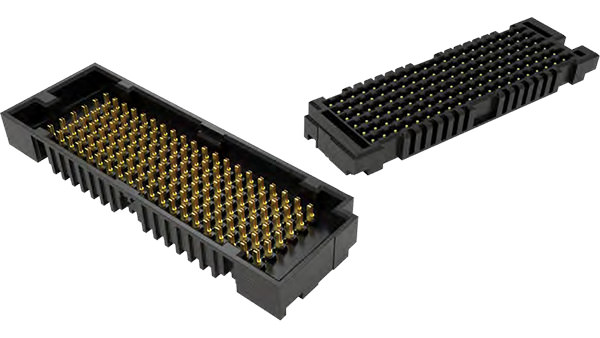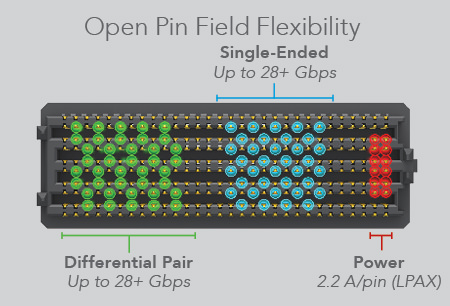
These low profile, high-speed arrays feature a dual beam contact system on a 1.27 mm x 1.27 mm (.050" x .050") pitch grid for maximum grounding and routing flexibility. This system is available in 4 mm, 4.5 mm and 5 mm mated heights with up to 400 total pins in 4, 6 or 8 row configurations.
They support 56 Gbps PAM4 applications and are also Final Inch® certified for Break Out Region trace routing recommendations to save designers time and money. Standard lead-free solder crimp simplifies IR reflow terminations and improves solder joint reliability.







